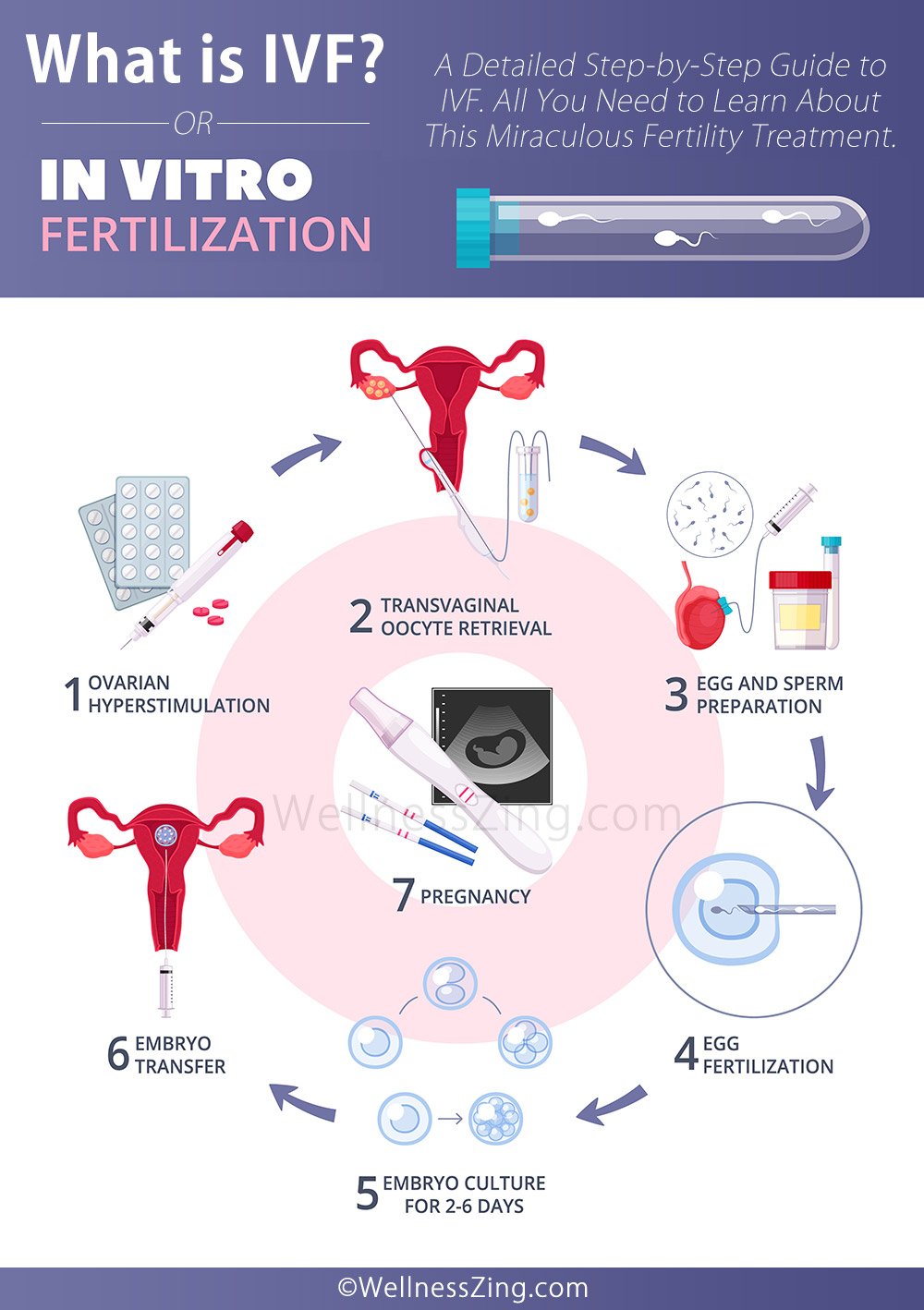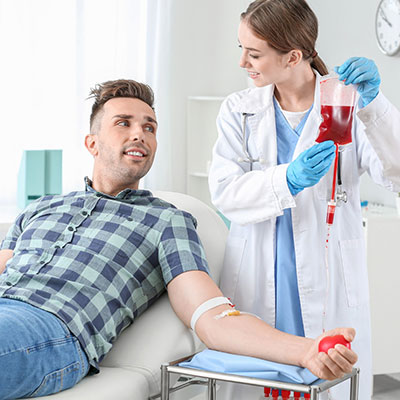Some quick facts about IVF that might surprise you
- Nearly 12% of the total population is affected by infertility, hence, it is quite a common issue
- Ectopic pregnancies might also occur when the couple opts IVF for pregnancy, the chances of which are 2 to 5 percent compared to natural conceptions
- Acupuncture comes with a direct connection with IVF. Going for an acupuncture process before, after, and during IVF boosts the success rate of IVF
- Using younger eggs for the process of IVF increases the chances of successful IVF compared to the donors with an age of 40 or above with youthful fertility benefits
- Merely 5% of the couples experiencing infertility actually prepare themselves for going with IVF as it is quite an uncommon treatment
- A deep screening of the eggs is carried out by the doctors to check if they are completely healthy for producing healthy embryo for IVF transfer
- Couples going through multiple embryo transfer are more likely to have identical twins or even triplets at the time of IVF treatment
- Healthy eating and sleeping habits are essential for having better or improved IVF cycles. Too much or too little sleeping hours reduce the success rates of IVF
Infertility and IVF – An Introduction
IVF, medically termed as In Vitro Fertilization, has proved to be a boon for the couples looking for some good news while dealing with infertility. The process involves fertilization, development of the embryo, and finally its implantation which further results in a positive pregnancy result. But what is actually an IVF process? Let’s learn about it in detail.
IVF is a kind of assistive reproductive technology or ART. The entire process involves recovering eggs from the ovaries of the woman and fertilizing them with the sperms obtained from the male. When the egg gets fertilized, it is called an embryo. The embryo is further frozen for storing and then transferred to the uterus of the woman.
Again, the entire process is carried out depending on the situation of both the partners. The process requires either:
- the eggs of the female partner and the sperms of the male partner
- the eggs of the female partner and sperms from the donor
- eggs from the donor and sperms from the male partner
- eggs from the donor and sperms of the donor too
- embryos that are donated
The doctors can further implant the embryos in the gestational carrier or in the uterus of a surrogate. The surrogate mother carries the baby for the couple and also gives birth to it.
Why do couples go for IVF treatment?
As mentioned above, IVF is a treatment suggested to the couples longing for a baby but either both or any one of them is suffering from infertility. The treatment is aggressive and expensive too, hence, the doctors mostly suggest other fertility treatments prior to IVF. Other infertility treatments include intake of fertility drugs, intrauterine insemination, etc. In such treatments, the doctors carry out the transfer of the sperms directly to the uterus of the women.
IVF treatment is suggested for infertility issues for cases like:
- when women suffer from infertility after the age of 40
- women having damaged or blocked fallopian tubes
- reduced functions of the ovaries
- endometriosis
- uterine fibroids
- infertility in males like abnormalities in the shape of the sperms, reduced sperm count, etc.
- unexplained infertility
Some parents also opt for IVF when they have the fear of passing any kind of genetic disorder to the baby. During a medical lab test, the embryo is tested for any genetic abnormality before the process of implantation is carried out.
What is the success rate of IVF treatment?
The success rate of IVF treatment depends on various factors like reasons leading to infertility, age of the couple, and the time of the process. As per the research by the American Pregnancy Association, for women below the age of 35, the live birth rate for IVF is around 41% to 43%. On the other hand, the live birth rate for women above 40, is around 13% to 18%. As per the results of a survey carried out in 2016, the success rate for all types of cycles was 27.3%, while the success rate for live births was 22.2% approximately depending on the age of the woman. Hence, the chances of success vary from couple to couple or say person to person.
How is the process of IVF carried out?
IVF is certainly not a process that can be carried out in a single day. The process begins with particular injections or medications to be taken prior to the first day of menstruation. Here is a short summary of how the entire process of IVF is carried out.
1.The process starts from the 1st day of your menstruation
Yes, the IVF treatment officially starts on the very first day of your menses. As every woman has a different body texture, the fertility nurse would guide you on how to track your 1st day of menses.
2. Stimulation of the ovaries
When the first day of your cycle is tracked, that’s the day when the stimulation process would actually start from. During your natural menses cycle, the ovaries would produce normally 1 egg. The doctors would prescribe you particular medications to be taken for around 8 to 14 days for encouraging the follicles to produce more eggs in the ovaries.
The medications prescribed would be according to your body texture as well as the treatment plan. The medications are usually given through injections, either 1 or 2 for a cycle, which is 1 or 2 every day. The injections at times can be quite unnerving but the fertility nurse would help you with a proper guide on how to take the injections on your own or with the help of your partner.
When the injections are taken, the doctors would check the ovaries and the development of the follicles with the help of ultrasounds and blood tests. Any adjustments with the medications would be further informed by the doctor. The process might also include transvaginal ultrasounds.
At the end of the stimulation period, the doctors would work on triggering the injection properly for getting the eggs ready for the process of ovulation. The fertility nurse would guide you for the process of trigger injection while the doctor would schedule the retrieval of the egg before you start ovulating.
3. Egg Retrieval
The next step is termed as egg pick up or egg retrieval in which the eggs are collected from the ovaries in the hospital. The doctor would prepare you for a general anesthetic process in which you would be asleep for around 30 minutes during which the process of egg retrieval is carried out.
With the help of the ultrasound technology, the fertility specialist would pass a needle into the ovary. This is a delicate process where every millimeter is considered and hence requires an experienced specialist to carry out the process. The eggs are not visible with naked eyes. They remain in the fluid in the follicles in the ovaries. The specialist would remove the fluid from the follicles that are grown enough containing an egg in them. The ultrasounds give the specialists a proper idea for the number of eggs they have retrieved. An average number of eggs collected is between 8 to 15 eggs.
The process and recovery from anesthesia take around 30 minutes after which you can walk as before again. However, a supporting partner is still recommended after the process while you move back home.
4. Sperm Sample
When the couples plan for IVF with fresh sperms, the sperms are usually collected from the male partner on the same day of egg retrieval. However, if the process is to be carried out with any donor sperms or frozen sperms, the doctors would already have them in the laboratory.
The sperms are grouped with 4 unique quality levels. The sperms are washed in a particular mixture for slowing them down so that the lab specialists can spot out the best sperms through the microscope. Healthy and perfect sperm is neither too fat nor too thin, neither too long nor too short. The best healthy sperms are selected and introduced to the eggs in the laboratory.
5. Fertilization
The eggs retrieved from the ovaries are then given to the lab specialist, which is still in the fluid form. With the help of microscopes, the lab specialists find the eggs from the fluid and remove them. The eggs removed are then placed with the healthy sperms in a dish for the fertilization process so that the process quickens. Both the eggs and the sperms get an opportunity to find each other and get fertilized just as they might get fertilized inside the body.
6. Development of the Embryo
When the sperm fertilizes an egg, it gets converted into an embryo. The lab specialists place the embryo in a special incubator where the condition of the development and growth is perfect. The perfect growing conditions are created in the lab itself through a mixture of amino acids just as the embryo gets developed and nurtured inside the body. The embryos are watched the embryos for around 5 to 6 days.
However, not every egg would be fertilized and get developed into an embryo. The eggs might fail to mature or the sperm selected might also not be healthy enough which leads to failure in the formation of the embryo. The couple is kept updated with the progress of the sperm, egg, and development of the embryo.
7. Transfer of Embryo
When the embryo gets developed in the laboratory, it is ready for getting transferred to the uterus of the female partner. The fertility nurse would contact you to inform you about your next appointment and help you with the necessary things you need to carry out for preparing for the day.
The transfer of embryo is a quite simple process similar to that of a pap smear. The process of transfer takes around 5 minutes and there would no anesthesia required to be given for the process. Even after the completion of the process, you can go for your routine schedule with ease as the embryo once placed in the uterus wouldn’t fall out. The embryo is placed initially in a small tube named catheter. The catheter is then placed in the uterus through the cervix.
8. Finally, a blood test
After around 2 weeks of transfer, the doctors would schedule a blood test for measuring the hormone hCG levels. If the hCG hormones are present in the bloodstream, it means the pregnancy test has a positive result. The fertility nurse would help you with the exact date of the blood test as it varies from one patient to another.
Hence, the entire process of IVF treatment would take a month or even more for learning if you have any good news or not.
The embryos that may not be used in the first attempt of IVF are further frozen for use in the second or third attempt. This is also going to be helpful to save some money. Again, if you are not willing to use the leftover embryos again, you can also donate them to other infertile couples or ask the clinic to destroy them. However, both the partners need to agree for donating or destroying the embryos.
The success of the IVF widely depends on the age of the woman for any couple. However, with the advancement in the IVF techniques, the success rate is widely increasing for women of any age.
What are the possible complications attached with the IVF?
The complications attached to the process of IVF include:
- multiple pregnancies that increase the chances of premature birth or birth weight
- miscarriage or loss of pregnancy
- ectopia pregnancy in which the eggs get implanted outside the uterus
- ovarian hyperstimulation syndrome in which an excess portion of the fluid is observed in the chest of the abdomen
- infections, bleeding, or damage to the bladder or bowels
These are some of the commonly found complications attached with IVF.
How can you prepare for the IVF process?
Prior to IVF, women first need to go through ovarian reserve testing. For this process, a blood sample is taken and tested to work on the FSH or follicle-stimulating hormone levels. The results of the test help the doctor in determining the quality, size, and other details regarding the eggs.
Along with the eggs, the doctor also examines the uterus with an ultrasound that is carried out with sound waves of high frequency which generates the image of your uterus on the computer. For this, the doctor also inserts a scope in your vagina and then inside the uterus. The test helps in learning about uterus health and provides the right way of implementing the embryos.
The male partners would go through a sperm testing in which they would have to provide their semen sample to the laboratory. The test will analyze details like shape, size, number, and other details of the sperm. In case if the sperms are damaged or weak, the intracytoplasmic sperm injection process is carried out. During this process, the technician would inject the sperms directly inside the eggs which are also considered to be a process in IVF.
Conclusion
IVF or In Vitro Fertilization is surely one of the advanced treatments for conceiving, it still comes with possible side effects like breast tenderness, bloating, cramping, headaches, mood swings, allergic reactions, bleeding, and much more, which can be too daunting. Again, as the process is quite complicated, getting success in the first trial is surely feasible. The process not only tolls the partners physically but emotionally and financially which can be difficult to deal with.
So, talk to the doctor, work on the possibilities, and ask for the support of your family to go through the process with fewer issues.



















